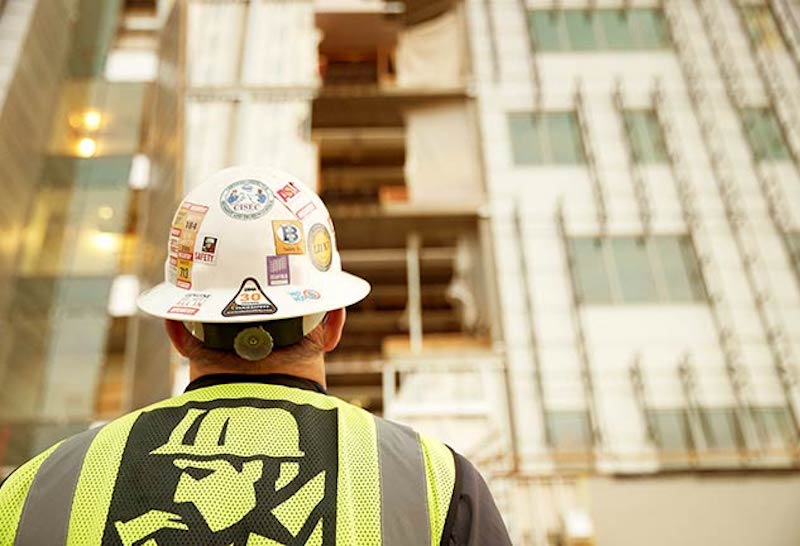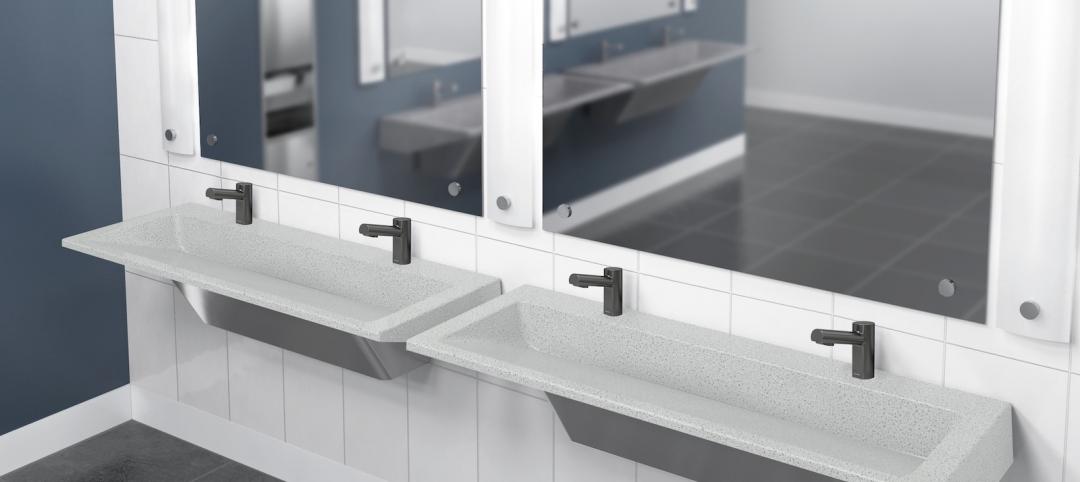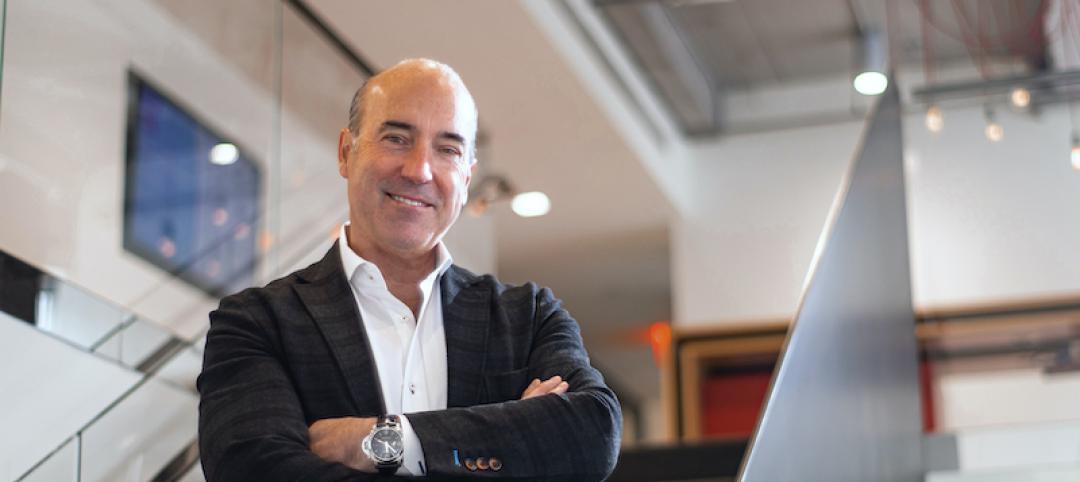The COVID-19 pandemic is fundamentally shifting the way people around the world live and work. While essential services such as construction have continued to operate, how we build has evolved. For many owners, prefabrication is playing an increasingly important role during the pandemic by enhancing safety and providing cost and schedule certainty.
WHAT ARE “PREFAB” AND “OFFSITE PRODUCTION?”
Offsite production moves processes once performed on the jobsite to a collaborative, digitally empowered environment in order to address typical building challenges earlier in the process, when they’re simple and cheaper to address. Prefabrication — or “prefab” — are the resulting elements of the building produced by this process.
What is the value of offsite production? When thoughtfully considered, implementing offsite production can bring more certainty across all areas of the project as well as other improvements compared to traditional construction, especially when considering impacts on safety, quality, schedule, cost and speed. Reducing risk and increasing certainty is the greatest value of offsite production.

THREE WAYS OFFSITE PRODUCTION AND PREFAB ARE DESIGNED FOR THE TIMES
In many ways, the benefits of offsite production and prefabrication are being compounded during the COVID-19 pandemic. These processes naturally supplement heightened safety protocols, control quality and create schedule certainty in increasingly uncertain times. Not convinced? Here are just a few ways prefab helps address the challenges of COVID-19:
- Fewer laborers on site: When the building process is decentralized, fewer people are required on the jobsite — reducing onsite personnel and the risk of potential exposure to COVID-19. Social distancing becomes much easier, and teams have more flexibility to add shifts or modify schedules to reduce congestion. COVID-related safety tasks such as screening lines or contact tracing are also reduced because fewer workers and visitors are involved.
- A safer, independent production environment: Fabricating and assembling building components in a separate, controlled shop environment — instead of on an active jobsite — makes it easier to implement and monitor COVID-19 safety guidelines, while maintaining rigorous quality standards. Additionally, shop production is typically more repetitious and planned far in advance of on-site needs, which can buffer against worker absences without reducing quality or productivity.
- Certainty in uncertain times: Offsite production helps decentralize both the workforce and building activities, which above all produces greater certainty for projects and owners. Decentralized projects are typically more resilient and carry greater safety, schedule and cost certainty – whether antagonized by inclement weather or global pandemics.
On jobsites where health and safety concerns are heightened — such as on a healthcare campus — offsite production can be an effective way to minimize building activity around patient care facilities. And when new triage spaces are needed quickly, offsite production can be the answer, leveraging prefabricated systems to augment existing spaces with beds, electrical, HVAC and communications infrastructure.
IS PREFAB A GOOD FIT FOR YOUR NEXT PROJECT?
As more owners and builders consider prefabrication during the COVID-19 pandemic, there’s a growing understanding that it's not a one-size-fits-all approach suitable for every project. But for many, prefab can make the difference in maximizing the value of the owner’s vision, while maintaining health and safety requirements. To find out for sure, your builder needs to conduct an upfront, formal analysis to determine the potential value of prefab for any given project.
You want to work with a builder committed as much to the process of offsite production as they are to selection of prefabricated products. Why is process so important? Put simply, prefab is not right for every situation.
With the right conditions, cost and schedule savings can be as high as 20 percent when using offsite production and prefab products vs. their traditional alternatives. However, that level of savings often comes with trade-offs. It’s imperative that owners, designers and builders work closely to identify offsite opportunities and manage potential trade-offs in order to deliver a successful project.
That means the first step must be for owners and builders to identify and prioritize project goals in the context of safety, quality, schedule and cost. To decide if your project is a good fit for offsite production and prefab, begin by asking what potential barriers to achieving your goals exist using a traditional building approach. Then work with your builder to determine what offsite opportunities could potentially lower those barriers and what trade-offs might exist.
Trade-offs aren’t always zero-sum, but may require changing plans or ways of thinking. In a recent example, a project team and owner determined that a prefabricated structural solution could accelerate the project schedule, but the vendor and material would need to be contracted much earlier in the project — notably out of step with that client’s typical procurement schedule. In this case, to realize schedule savings, the procurement schedule would need to change.
BUILDING THE RIGHT TEAM
The next step is to build the right team of design and construction professionals early in the design effort to accomplish two critical goals:
- Develop the most effective processes to achieve owner goals.
- Based on the processes developed, evaluate the most effective mix of offsite strategies.
The earlier you choose design and construction professionals, the quicker they can align and begin delivering value early in the design effort — when changes are cheap and low-risk. Working with a partner known for successfully building teams helps ensure every member works in harmony to achieve owner goals. But the right team is more than experience alone. It must be a group dedicated to maximizing the value owners get from offsite production, not the other way around.
At McCarthy, we don’t push in-house fabrication facilities or play favorites. We look at all available options and objectively recommend an approach that produces the best value to our clients. Our principles of safety, quality and value are only enhanced by an offsite production approach.
A VISION FOR THE FUTURE
Where and how offsite production products are being sourced is changing dramatically. McCarthy deploys a national supply-chain approach to best align offsite production products with owner goals, as these methods and products continue to develop.
BIM and other technologies are the cornerstone of this approach: allowing teams to collaboratively plan and track building activities with exceptional clarity, very early in the process. It also allows McCarthy to leverage expertise from all corners of our national network. At McCarthy, the building process is truly “going global.”
The technology feeding this opportunity wasn’t available even five years ago. Now it’s shaping the future of how America and the world builds quality projects more efficiently and cost-effectively than ever before. McCarthy will continue to leverage new technologies — and our offsite production expertise — to lead the way.
Most importantly, McCarthy remains focused on leveraging the advantages of offsite production to help promote the health and safety of workers as the COVID-19 pandemic continues. Safety has always been a cornerstone of our culture, making it easier to develop new protocols that help owners build with confidence in uncertain times. We will build on that foundation to keep America building, now and into the future.
Related Stories
K-12 Schools | Nov 30, 2022
School districts are prioritizing federal funds for air filtration, HVAC upgrades
U.S. school districts are widely planning to use funds from last year’s American Rescue Plan (ARP) to upgrade or improve air filtration and heating/cooling systems, according to a report from the Center for Green Schools at the U.S. Green Building Council. The report, “School Facilities Funding in the Pandemic,” says air filtration and HVAC upgrades are the top facility improvement choice for the 5,004 school districts included in the analysis.
Giants 400 | Nov 14, 2022
4 emerging trends from BD+C's 2022 Giants 400 Report
Regenerative design, cognitive health, and jobsite robotics highlight the top trends from the 519 design and construction firms that participated in BD+C's 2022 Giants 400 Report.
Healthcare Facilities | Jun 20, 2022
Is telehealth finally mainstream?
After more than a century of development, telehealth has become a standard alternative for many types of care.
Coronavirus | May 20, 2022
Center for Green Schools says U.S. schools need more support to fight COVID-19
The Center for Green Schools at the U.S. Green Building Council released a new report detailing how school districts around the country have managed air quality within their buildings during the second year of the COVID-19 pandemic.
Industry Research | Mar 9, 2022
Survey reveals five ways COVID-19 changed Americans’ impressions of public restrooms and facilities
Upon entering the third year of the pandemic, Americans are not only more sensitive to germs in public restrooms, they now hold higher standards for the cleanliness, condition and technology used in these shared spaces, according to the annual Healthy Handwashing Survey™ from Bradley Corporation conducted in January.
Codes and Standards | Feb 21, 2022
New standard for ultraviolet germicidal irradiation
The Illuminating Engineering Society (IES) recently introduced the standard, ANSI/IES RP-44-21 Recommended Practice: Ultraviolet Germicidal Irradiation.
Coronavirus | Jan 20, 2022
Advances and challenges in improving indoor air quality in commercial buildings
Michael Dreidger, CEO of IAQ tech startup Airsset speaks with BD+C's John Caulfield about how building owners and property managers can improve their buildings' air quality.
Coronavirus | Jul 20, 2021
5 leadership lessons for a post-pandemic world from Shawmut CEO Les Hiscoe
Les Hiscoe, PE, CEO of Shawmut, a $1.5 billion construction management company headquartered in Boston, offers a 5-point plan for dealing with the Covid pandemic.
Resiliency | Jul 15, 2021
A new report urges federal investment in healthier buildings
The National Institute of Building Sciences also calls for code changes and greater cooperation between building owners and the AEC community.
Multifamily Housing | Jul 7, 2021
Make sure to get your multifamily amenities mix right
One of the hardest decisions multifamily developers and their design teams have to make is what mix of amenities they’re going to put into each project. A lot of squiggly factors go into that decision: the type of community, the geographic market, local recreation preferences, climate/weather conditions, physical parameters, and of course the budget. The permutations are mind-boggling.

















